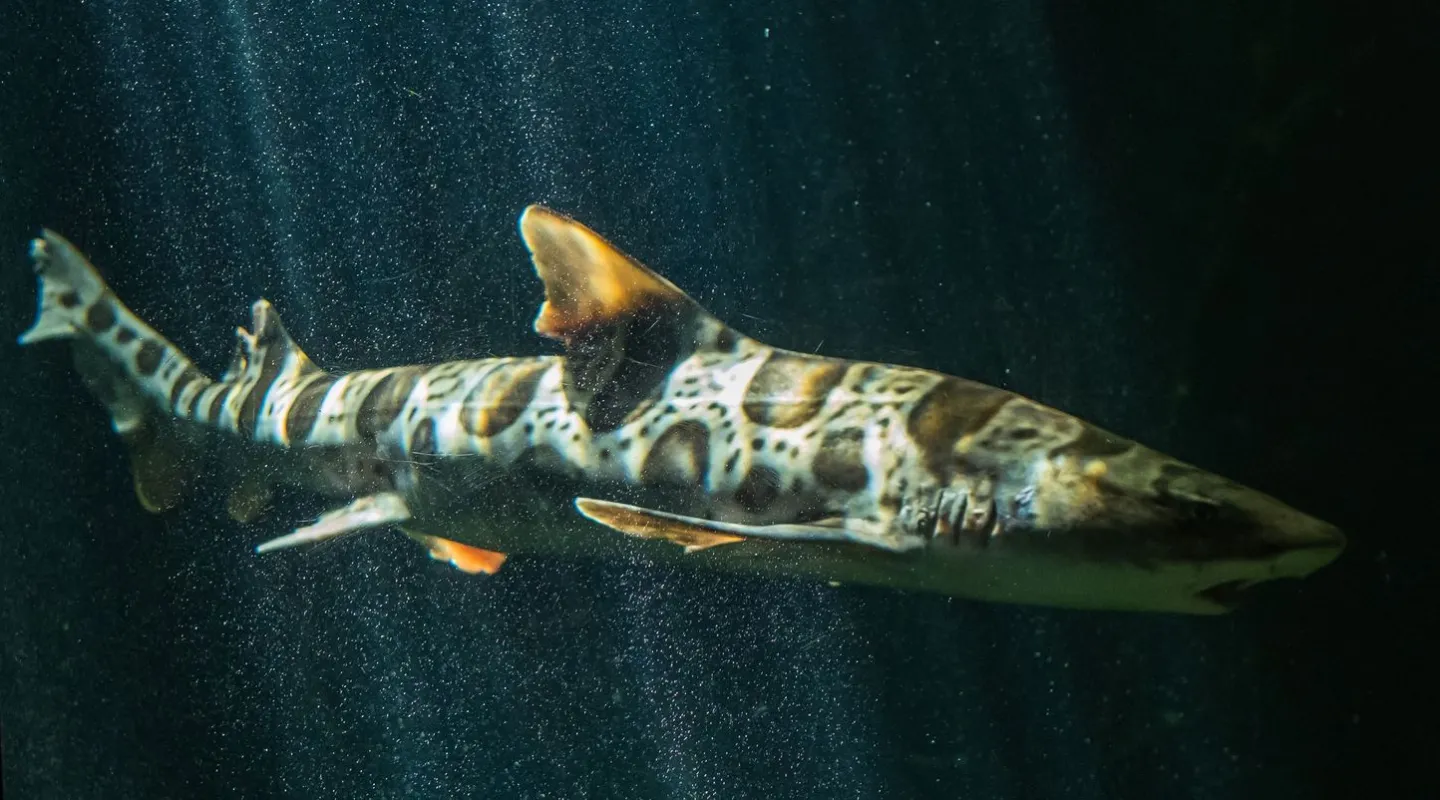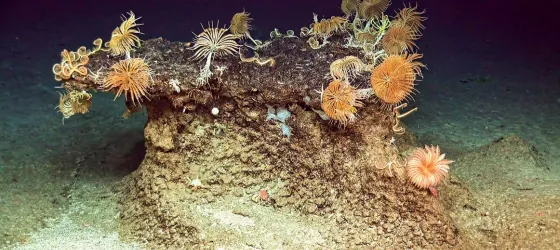They are not regarded as dangerous to humans. They rarely bite and then only if they feel threatened.
Where is the animal to be found?
The leopard shark lives along the western coast of the North American continent. It can be found swimming in kelp forests.
The leopard shark lives on sandy, rocky bottoms and in kelp forests in cold temperate waters, to depths of around 100 metres.
How can it be recognised?
They measure on average between 1 m and 1.3 m. They are often confused with the zebra shark.
What is distinctive about it?
Like all sharks, leopard sharks have a sixth sense: electroreceptors that can detect weak electrical fields emitted by their prey.
The leopard shark is aplacental viviparous (previously called ovoviviparous); this means that the eggs hatch inside the female's abdomen. It gives birth to 4 to 30 juveniles measuring about 20 cm. The gestation period is approximately one year.
Threat and protective measure
The Leopard shark is part of a MON-P, or monitoring program in which Nausicaa is involved. It is a European conservation programme that monitors the populations of animals in institutions that are members of EAZA, the European Association of Zoos and Aquariums.







